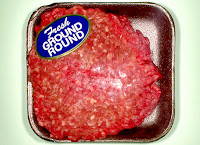 |
| Raw Tofu and Soy Beans |
Soy has always been viewed and categorized as one of the healthiest foods you can eat. Asian countries have been eating soy beans for centuries and they live some of the longest lives in the world. The fact is that soy is a great source of protein, essential vitamins and minerals and it is completely fat-free. The amount of protein alone in soy is 5 times that of vegetables, but the main problem with soy is the way it's processed. In East Asia where soy originated and has been grown and eaten for years is consumed in it's natural state. The main problem is the United States sells 90% genetically modified soy (GMO) and the overly processed soy products include soy protein isolates, hydrolyzed vegetable protein (HVP), and textured vegetable protein (TVP).
So why should people avoid GMO soy products? The main reason is that
soy contains isoflavones, specifically genistein and daidzein and these substances have similar reactions to estrogen within the body, and with too much estrogen the body is prone to cancers, mood swings and emotionally unstable states, additional fats on the waistline, thighs, and hips (Casanova, Santell).
Soy may be connected with Alzheimer’s Disease and in studies in Japan and Hawai, men who consumed tofu at least twice weekly had more cognitive impairment than those who rarely or never ate tofu. (White, Markesbery). Soy is also a mineral-deficient food, and contains phytin, which depletes essential minerals such as iron, zinc and magnesium out of the body before they can be absorbed. This can potentially place soy in the category of a powerful cancer promoter of the breast, prostate, lung and colon (Yu).
 |
| Tofurky Products |
A lot of people assume that soy is the main food source in Asian countries, but they actually use soy as a condiment rather than a main meal. Japan and China on average has about 10 grams, which is two teaspoons, of soy per day. The problem that Americans, especially vegans have is you're not suppose to replace a whole meal (meat products, etc.) with GMO soy products. Asian countries also consume fermented soy, and like I mentioned earlier 90% of soy products sold in the United States is genetically modified soy. Soy has been labeled as one of the essential health foods in the world but with so many soy products being overly processed, more risks are proposed rather than potential health benefits. The best advice in order to get the most nutrients from soy is having fermented soy products or soy beans in their natural state (also known as edamame).
Resources:
Casanova, M. et al. “Developmental effects of dietary phytoestrogens in Sprague.” Toxicol Sci, Oct. 1999, 51 (2): 236-244.
Santell, L, et al. “Dietary genistein exerts estrogenic effects upon uterus, mammary gland and the hypothalamic/pituitary axis in rats.” J Nutr, Feb. 1997, 127(2) 263-269.
White, L R., Petrorich, H, Ross, G W, and Masaki, K H. “Association of mid-life consumption of tofu with late life cognitive impairment and dimentia: the Honolulu-Asia Aging Study.” Fifth International Conference on Alzheimer’s Disease, #487, 27 July 1996, Osaka, Japan.
White, LR, Petrovitch, H, Ross, G w, Masaki, K H, Hardman, J, Nelson. J, Davis. D, and Markesbery, W. “Brain again and midlife tofu consumption.” J Am Coll Nutr, April 2000, 19(2): 242-2555.
Yu, H. “Role of the insulin-like growth factor family in cancer development and progression.” J Natl Cancer Inst, Sept. 20, 2000, 92(18)1472-1489.








